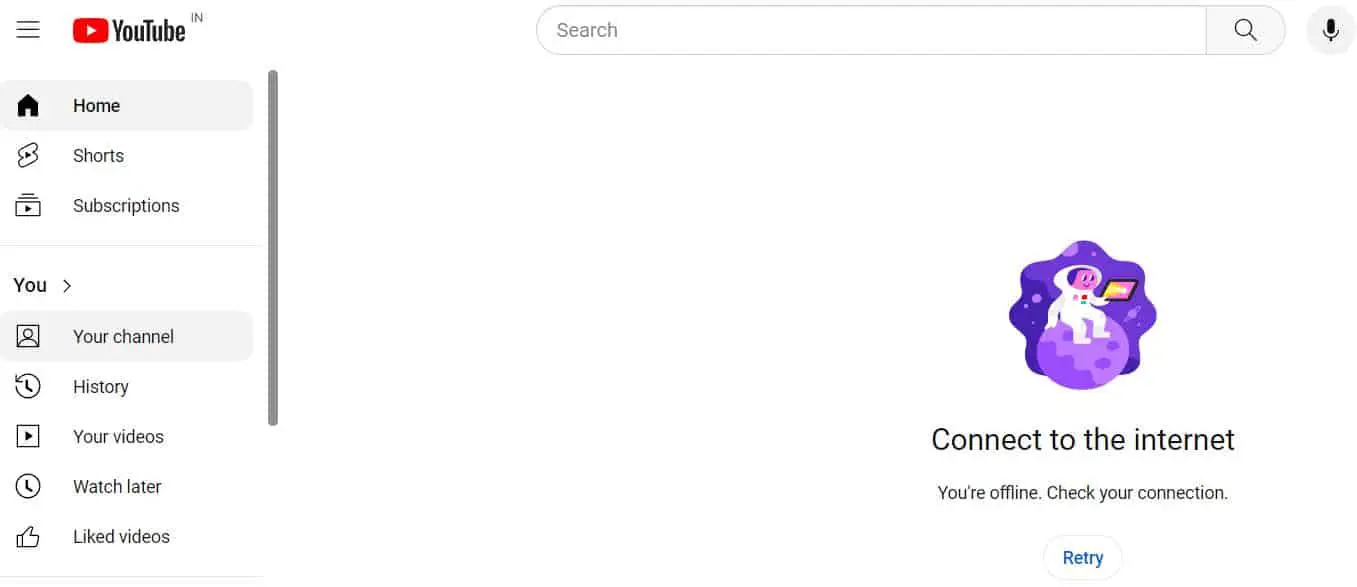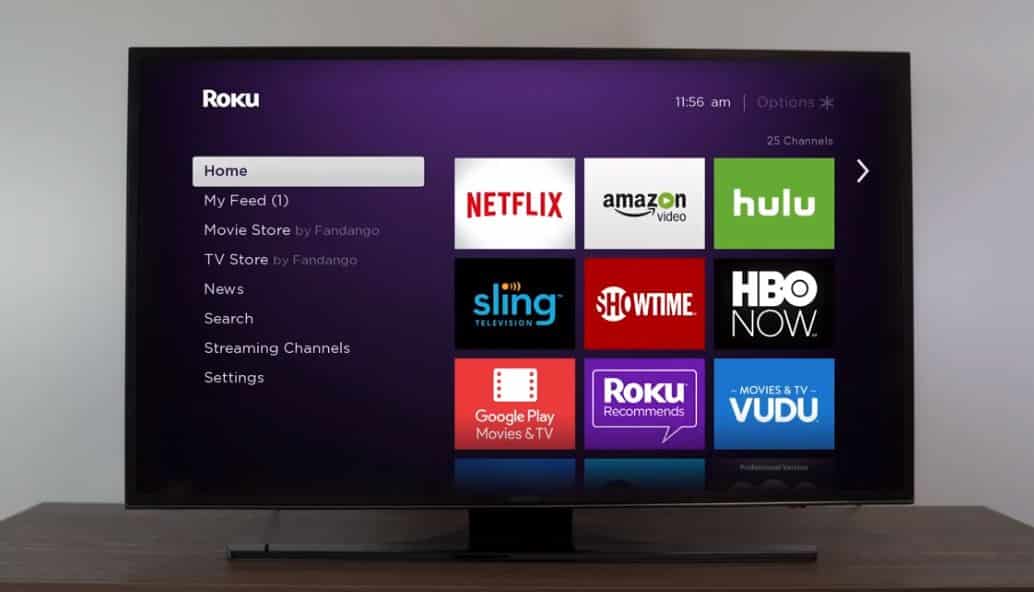Many people enjoy watching YouTube videos on their televisions. Connecting your TV to the internet and loading the YouTube app provides a big-screen experience for viewing videos from the popular platform. However, there is nothing more frustrating than going to watch a YouTube video on your TV only to find that it doesn’t properly fill the screen. Instead, the video plays in a small box with black bars around it. This can ruin the experience of watching YouTube on a TV. There are several reasons why YouTube videos may not play on full screen on a TV, and some steps you can try to fix the issue.
How to Fix YouTube Not Showing Full Screen on Smart TV
The video may play in a small window instead of taking up the entire TV screen, or it may be blurry and low quality when expanded. There are a few different things that could be causing YouTube not to go full screen on a TV, and a few easy troubleshooting steps to fix it.
Fix with Some Common Steps
Before diving into more complex troubleshooting, try these basic first steps, which resolve full-screen issues in many cases:
Check the TV Settings
Many modern smart TVs have display or picture settings that must be changed to enable full-screen YouTube. Go into the TV’s settings menu and look for an option like “Screen Mode”, “Picture Size,” “Display Mode,” or something similar. Change this from the default setting to “Full Screen” or a similar full-screen option.
Check the YouTube App Settings
The YouTube app on some TV platforms also has its own settings that impact full-screen video playback. Open the app, go to settings, and look for a “Full-screen playback” or similar option to enable.
Restart the TV and YouTube App
A simple restart of the TV and the YouTube app can clear up glitches that prevent full-screen video playback. First, close the YouTube app completely. Then turn the TV off and back on. Finally, reopen the YouTube app and try full screen again.
Update TV and App Software
Outdated software can cause full-screen issues. Check for system software updates on your smart TV. Also, update the YouTube app to the latest version available. Keeping both the TV firmware and YouTube app up-to-date minimizes bugs.
Check the Connection Issues
Problems with the physical connection between your TV and the device running the YouTube app can also block full-screen playback. If you’ve tried the first steps above and YouTube still isn’t full-screen, look into the following connection issues:
TV Input
Make sure the TV input is set to the correct HDMI port that your streaming device is connected through. Toggle through the TV inputs and select the port in use to make sure the signal is being received.
Loose HDMI Cable
Check that the HDMI cable going from your streaming device to the TV is firmly connected at both ends and not loose. A loose connection can impact signal quality. Try disconnecting and reconnecting the cable or swap in a different HDMI cable to test.
Supported HDMI Version
Older HDMI cables may not support the bandwidth required for full-screen high-resolution video. Use HDMI cables labeled “High Speed” or higher. HDMI 2.0 and above cables are optimal.
Connect Directly to TV
If you are “screen mirroring” or “casting” YouTube from a phone or tablet to the TV, try instead using the native TV app or connecting the streaming device directly to the TV with HDMI. Screen mirroring can limit resolution and cause full-screen issues.
TV Mode Settings
TVs have different display modes for handling input sources. Try changing the TV’s mode presets when the streaming device is connected. For example, use “Game Mode” if available. This reduces input lag, which can improve full-screen playback on some TVs.
Streaming Device Troubleshooting
Issues with the streaming device itself, such as a Roku, Fire Stick, Apple TV, or smart Blu-ray player, can also interfere with full-screen YouTube playback. Troubleshoot your streaming device in the following ways:
Restart the Device
Fully restart your streaming player. This clears memory leaks and glitches that could block YouTube from full-screen viewing.
Update Device Software
Make sure the device software is updated to the latest version available. Firmware fixes may resolve full-screen bugs.
Adjust Device Settings
The streaming device may have a dedicated “Screen resolution” or “Display mode” setting, which needs to be optimized for your TV. Consult the device menus and instruction manual.
Check Cables
Try using a different HDMI cable between the streaming device and the TV. Also, if applicable, ensure the device’s power cable is securely connected.
Factory Reset Device
For persistent full-screen issues that remain unresolved, a factory reset of the streaming player often helps. Back up your apps and settings first. This will wipe and reinstall the device software.
Also Read:
How to Fix Samsung Smart Hub Is Being Updated
Netflix Slow on Samsung TV: How to Fix?
Check YouTube Account Settings
Less commonly, settings associated with your YouTube or Google account could affect full-screen capabilities. Check these just in case:
Restricted Mode
If the “Restricted Mode” is enabled on your YouTube account, it can block full-screen viewing of some videos. Disable this mode in account settings if enabled.
Parental Controls
Account-level parental control restrictions may limit full-screen playback on your account profile. Turn off parental controls or try playing YouTube signed in to a different profile.
Location Settings
YouTube will restrict certain content in some geographical regions. Use a VPN or proxy service to check if your location limits full-screen playback.
App Permissions
Ensure any system or YouTube app permissions are enabled for your Google account profile, especially media-related permissions. Re-enable full permissions if needed.
Adjust YouTube Video Quality
Issues with the streaming quality of the YouTube video itself can translate into full-screen problems. Adjust the YouTube video quality as follows:
Change Video Quality
In the YouTube player settings, change the video quality to a lower resolution, like 720p or 480p. If fullscreen works properly at lower resolutions, insufficient bandwidth is likely the issue.
Update Quality Preference
In YouTube account settings, you can change the default playback resolution. Set this to a lower quality if your Internet connection lacks bandwidth.
Check Network Speed
Use a tool like Speedtest.net or Fast.com to check your network connection speed where the TV is located. Full HD and 4K video require substantial bandwidth.
Close Other Apps
If bandwidth is limited, close any other apps on your streaming device or other devices using bandwidth on the same network. This frees up bandwidth for full-screen YouTube playback.
Pause to Pre-Buffer
Pausing the video briefly before going full screen can allow more content to buffer in advance, reducing mid-stream resolution drops.
Getting YouTube full screen on your TV can require some troubleshooting of settings, connectivity, streaming devices, account issues, and video quality. Following the tips above should get your full screen working again to enjoy YouTube properly on the big screen. Check for any firmware updates, test different cables and connections, adjust app/account settings, and optimize video resolution based on your available bandwidth. With the right troubleshooting steps, your full-screen YouTube experience will be restored.





